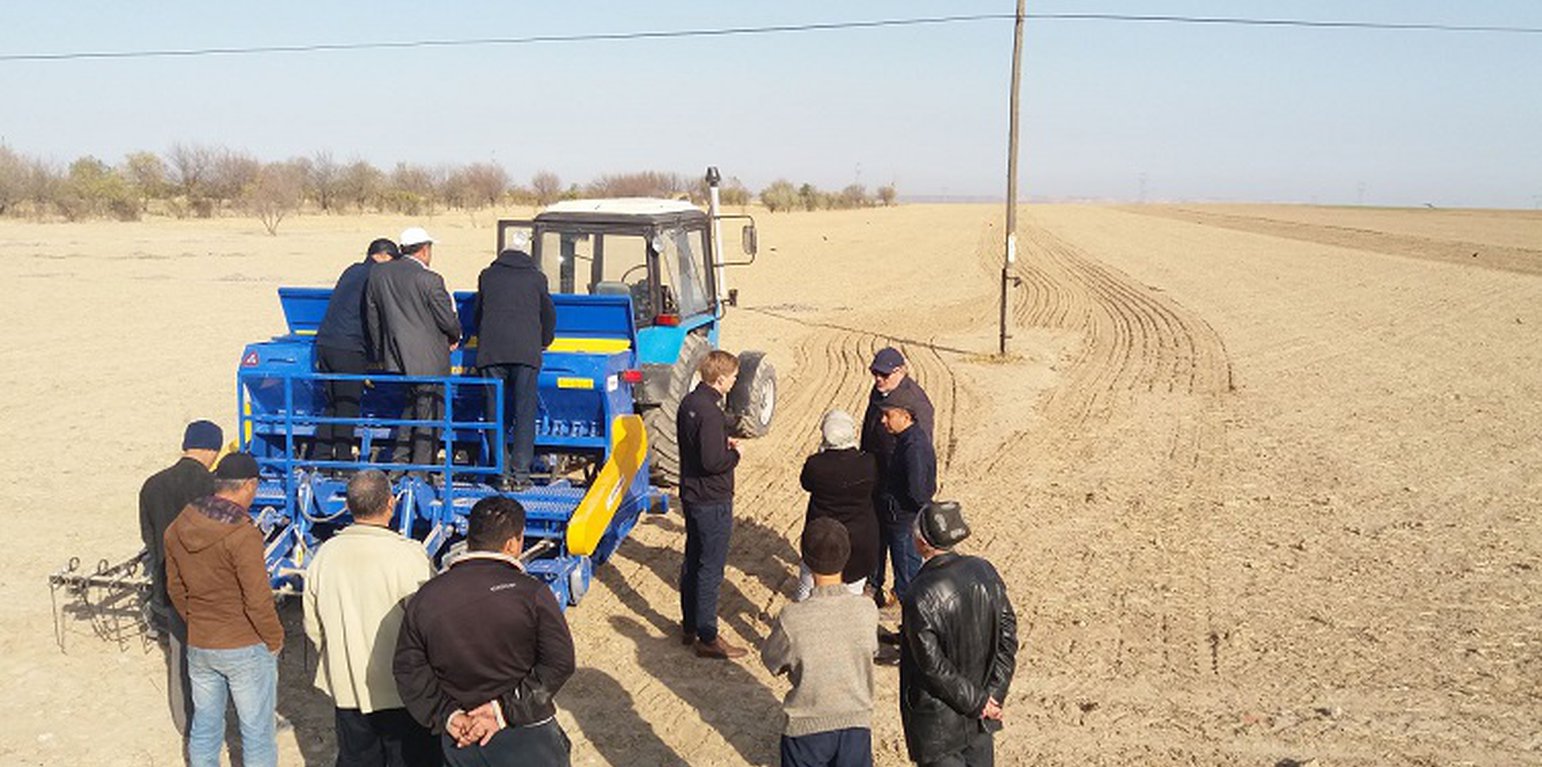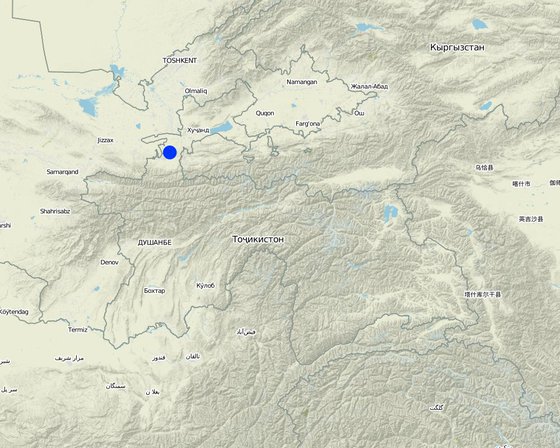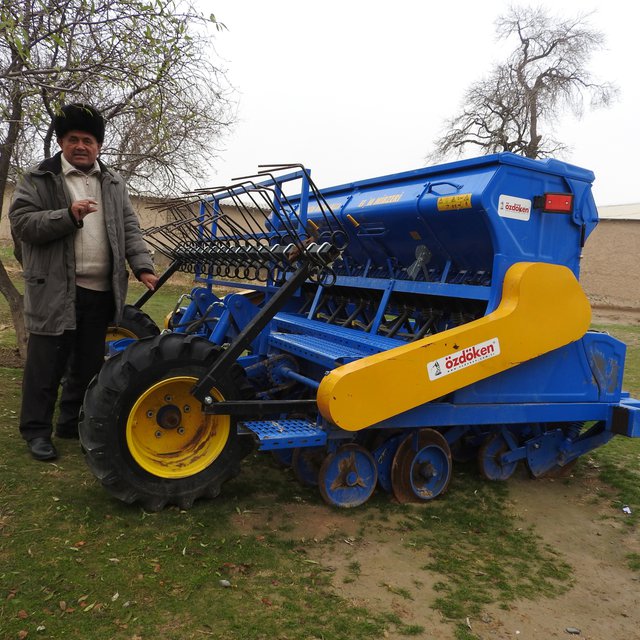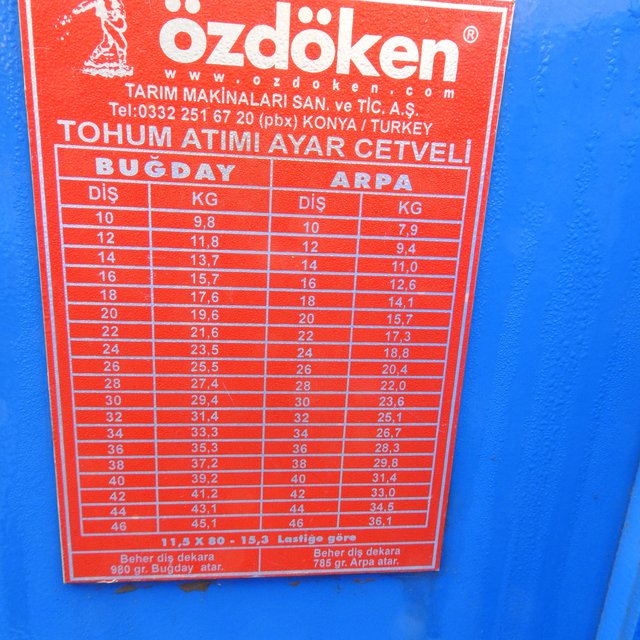



By zero tillage technology (also called direct seeding, direct sowing or direct drilling) seed of cultivated crops is placed without mechanical treatment of the topsoil. Within one operation the residues from previous crops and weeds are superficially removed, seeds are planted, fertilizer applied and covered by soil. For the purpose of weed control the field is ploughed every third year. Also herbizides are used for weed control. The special drilling machine used for this provides the opportunity of regulating the density of sowing and the dosage of applied fertilizer in accordance to the yield potential of the site, which is typically determined by soils fertility and moisture.
In comparison with the traditional methods of arable farming the application of the zero tillage technology (direct drilling) reduces the following risks from the ecology and agronomy point of view: soil compaction, lump formation, destruction of the soil and dust formation, and manifestation of water and wind erosion. Also, the decrease of organic matter and the destruction of the habitat of soil organisms caused by intensive mechanical soil treatment are reduced. The avoiding of breaking up and turning the upper soil horizon hampers the evaporation from the soil surface and increases the soil moisture.
From the economic perspective, with the use of zero tillage technology (direct sowing) farmers can save the expenses for ploughing, leveling, chiseling that significantly reduces the costs of farmers. Improved soil moisture reduces drought-related risks of rain-fed winter wheat farming. Despite the fact, that the season of 2017-2018 was unusually dry and cold, the direct drilling technology showed good result impressing local farmers.
The technology has been demonstrated at two demo plots (each 2.5 hectares) for cultivation of wheat crop, established in Devashtich district during the 2017 agriculture season. To ensure longer-term sustainability of the idea and quick dissemination among the farmers, the local Non-commercial cooperative “Agra va iqlim” was engaged as a local partner, which has been assisted in the purchase of a combined drilling and fertilizing machine (“Özdöken”, Made in Turkey). Additionally wheat varieties have been provided, which are particularly suitable for rain-fed farming and can cope with due to climate change increasing aridity in the area: “Sultan” (Turkey), “Sarvar” (Tajikistan), “Krasnodar99” and “Moskovskiy93” (Russia). These varieties are high growing and provide a good amount of straw, which is in high demand by livestock owners in the region (1.7 TJS per kg).
As a result, during the agricultural season 2017/2018 already 50 involved farmers applied the technology for 50 hectares of rain-fed land for winter wheat. During 2018/2019 an expansion of involved farmers to approx. 150 and of the coverage area to 150 hectares of land for cultivation of winter wheat is planned.

Location: J. Rasulov district and Istaravshan district, Sughd region, Tajikistan
No. of Technology sites analysed: 10-100 sites
Spread of the Technology: applied at specific points/ concentrated on a small area
In a permanently protected area?: No
Date of implementation: 2017; less than 10 years ago (recently)
Type of introduction






| Specify input | Unit | Quantity | Costs per Unit (TJS) | Total costs per input (TJS) | % of costs borne by land users |
| Equipment | |||||
| Drilling machine | 1.0 | 140500.0 | 140500.0 | ||
| Total costs for establishment of the Technology | 140'500.0 | ||||
| Total costs for establishment of the Technology in USD | 17'562.5 | ||||
| Specify input | Unit | Quantity | Costs per Unit (TJS) | Total costs per input (TJS) | % of costs borne by land users |
| Equipment | |||||
| Drilling machine services | ha | 1.0 | 380.0 | 380.0 | 100.0 |
| Services for spraying herbicides and other pesticides | ha | 1.0 | 100.0 | 100.0 | 100.0 |
| Fertilizer application | ha | 1.0 | 150.0 | 150.0 | 100.0 |
| Plant material | |||||
| Wheat seeds | kg | 200.0 | 3.2 | 640.0 | 100.0 |
| Fertilizers and biocides | |||||
| AmmoPhos | kg | 100.0 | 3.75 | 375.0 | 100.0 |
| CarbamidN | kg | 100.0 | 3.0 | 300.0 | 100.0 |
| Herbicide Granstar WDG | kg | 0.02 | 2000.0 | 40.0 | 100.0 |
| Herbicide Dezormon 600 (2.4-D amine salt) | l | 0.8 | 100.0 | 80.0 | 100.0 |
| Fungicide Tilt EC | l | 0.5 | 270.0 | 135.0 | 100.0 |
| Total costs for maintenance of the Technology | 2'200.0 | ||||
| Total costs for maintenance of the Technology in USD | 275.0 | ||||
Quantity before SLM: 1-1.1 t/ha
Quantity after SLM: 1.2-1.5 t/ha
Drought year - higher production increase possible in good years.
Quantity before SLM: 2630 TJS/ha
Quantity after SLM: 2200 TJS/ha
Reduction of expenses for soil cultivation, sowing and application of fertilizer.